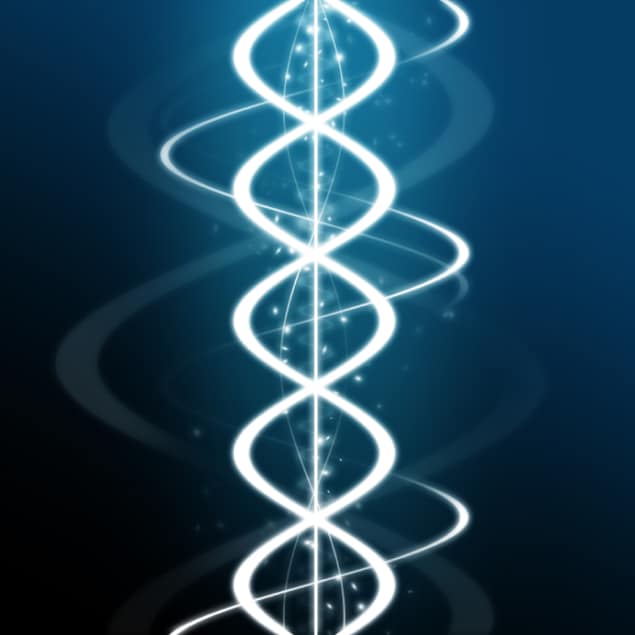
Scientists at the Delft University of Technology in the Netherlands have taken an important step towards a quantum Internet by connecting three qubits (nodes) in two different labs into a quantum network. Such quantum networks could be used for secure communication, for safer means of identification or even distributed quantum computing.
The group, led by Ronald Hanson, is no stranger to setting up quantum links. In 2015 members of the group performed the first loophole-free Bell inequality violation, successfully entangling two electron spin states over 1.3 kilometres in an experiment that finally put the lid on the 80-year-old Einstein-Podolski-Rosen dispute about the nature of entanglement. Although this two-node experiment could hardly be called a network, it laid the basis for the present work, which is described in a preprint on the arXiv repository.
From Alice to Charlie
The new network contains three communication quantum bits (qubits) in the form of nitrogen vacancy (NV) centres in diamond. These qubits are known, in traditional fashion, as Alice, Bob and Charlie, and the network that connects them has several unique aspects. Bob, for example, is associated with a separate memory qubit consisting of a nuclear spin in a carbon-13 atom. Another key aspect is that the system can signal when entanglement is established by detecting the photon that was used to create the entanglement.
The quantum network operates by first entangling the communication qubits of Alice and Bob. At Bob’s node, the entangled state is “cloned” to Bob’s memory qubit, leaving Bob’s communication qubit ready for further action. The next step is to set up a remote entanglement between the communication qubits of Bob and Charlie. This creates two links, each with a shared entangled state: one state shared between Alice and the memory qubit of Bob and the other shared between the communication qubits of Bob and Charlie. Bob, the central node, then performs an operation known as a Bell state measurement on its two qubits. This measurement teleports the state stored on Bob’s memory qubit to Charlie, which in turn establishes direct entanglement between Alice and Charlie.
Stabilizing the network
Expanding a quantum network from two nodes to three – and, in time, from three to many – is not as simple as just adding more links. The task is complicated by the fact that noise (which can destroy quantum information) and optical power levels vary greatly across the network.
The Delft team addresses this problem using a twofold stabilization scheme. The first, local element of the scheme focuses on stabilizing the interferometers used to generate entanglement between the communication qubit and the “flying” qubit at each node. The team does this by measuring the phase of the light that reflects off the diamond’s surface during the entanglement process and boosting this faint phase signal with a stronger laser beam. Polarization selection ensures that the reflected light does not reach the detectors that register entanglement, which would create false entanglement signals. The phase of the boosted light is measured with additional detectors, and the interferometers are stabilized by feeding the measured phase signal back to the piezo-controllers that position their mirrors.
The second, global part of the stabilization involves directing a portion of the laser light towards a separate interferometer used to generate entanglement between nodes. The interference is measured and the signal coupled to a fibre stretcher in one arm of the interferometer. By stretching the fibre, the phase of light in that arm can be controlled and the interferometer can be stabilized. This local and global stabilization scheme can be scaled to an arbitrary number of nodes, making it possible to expand the network.
Expansion strategies
The researchers suggest that their network could be expanded by increasing the number of qubits at a single network node, similar to the ten-qubit diamond NV-centre that a different Delft group created in 2019. They also say that the new network provides a platform for developing higher-level quantum network control layers that would make it possible to automate the network.

Diamond defects could boost the range of quantum cryptography
Jian-Wei Pan, a quantum communications expert at the University of Science and Technology of China who was not involved in the work, thinks its key achievement lies in realizing entanglement swapping between two elementary links of remotely entangled matter. “Such a process is essential in extending entanglement distances via quantum repeaters,” Pan says. However, he adds that the fidelities of the elementary entanglement, gate operations and storage – which together determine the scalability of the group’s approach – will need to be improved before a larger-scale network can be constructed.
Anders Sørensen from the Niels Bohr Institute in Denmark thinks that this is an important milestone in the quest for the quantum Internet. “This is the first time that anybody has managed to connect more than two processing nodes,” says Sørensen, who was also not part of the Delft team. “At the same time, they demonstrate some of the protocols, for example entanglement swapping, which we believe will play an important role in a full-scale quantum network.” While “formidable challenges” remain, especially when it comes to stretching the network over longer distances, Sørensen concludes that “this is a challenge that they are in a good position to tackle”.
"network" - Google News
March 17, 2021 at 05:08PM
https://ift.tt/3qXlspT
Three-node quantum network makes its debut – Physics World - physicsworld.com
"network" - Google News
https://ift.tt/2v9ojEM
Shoes Man Tutorial
Pos News Update
Meme Update
Korean Entertainment News
Japan News Update

No comments:
Post a Comment